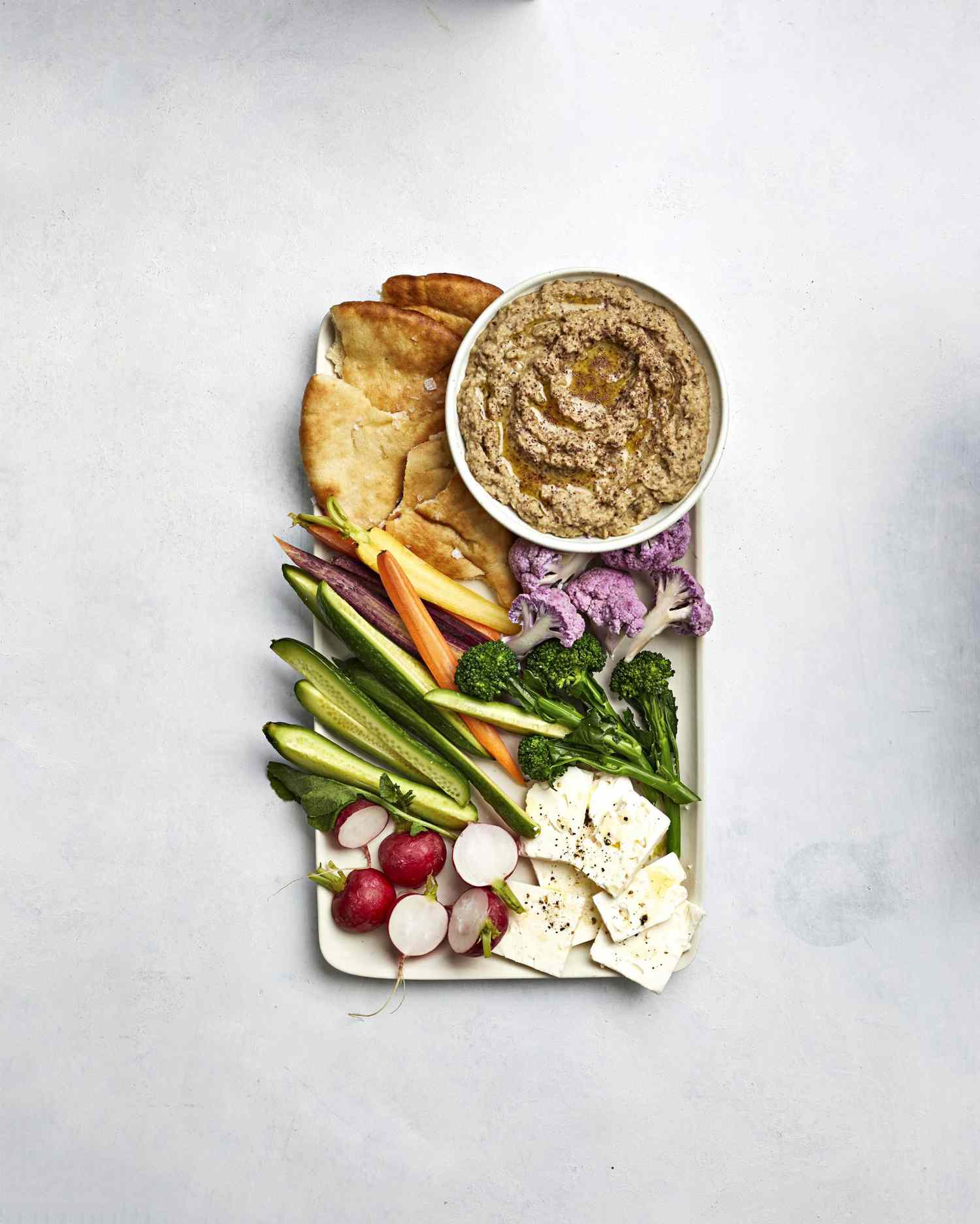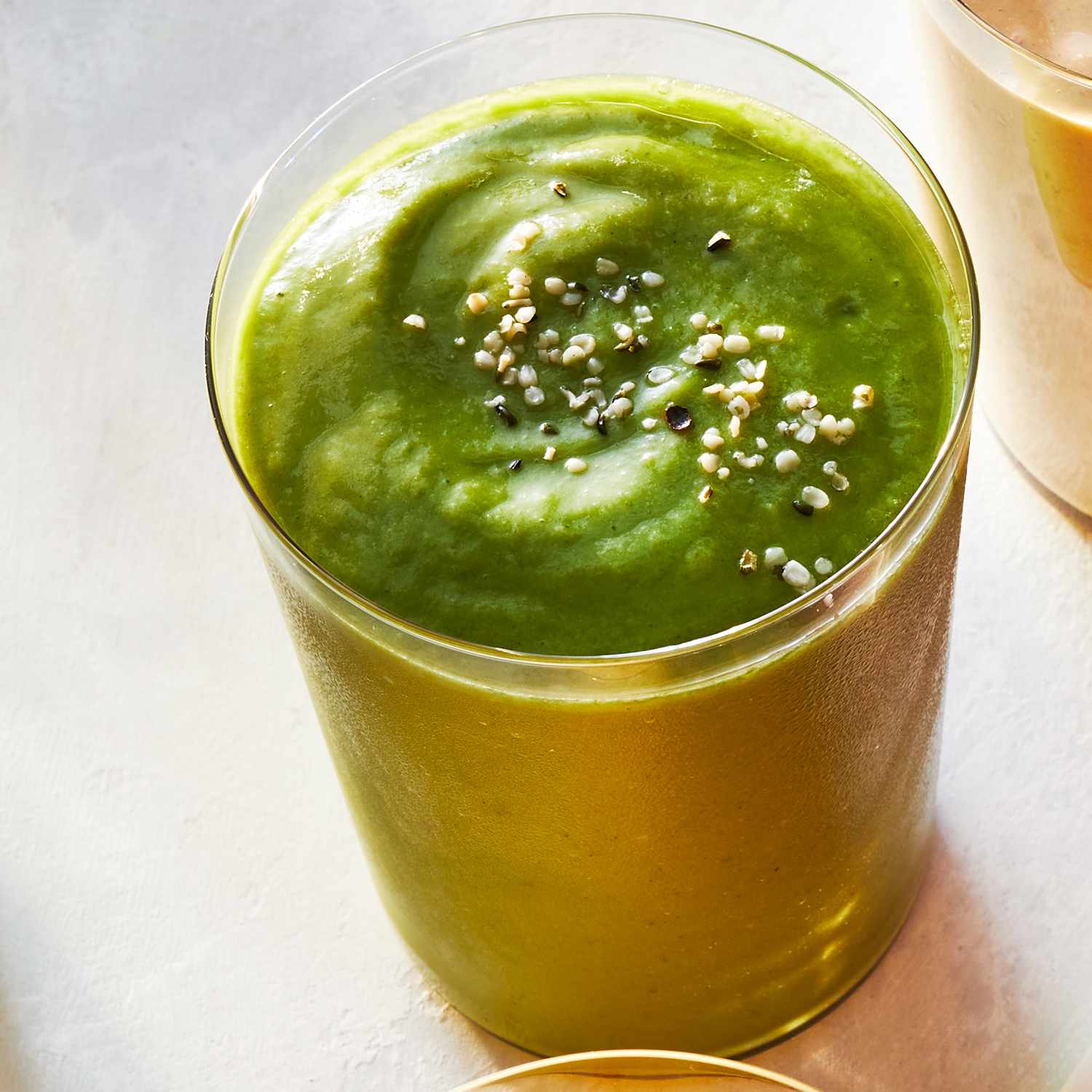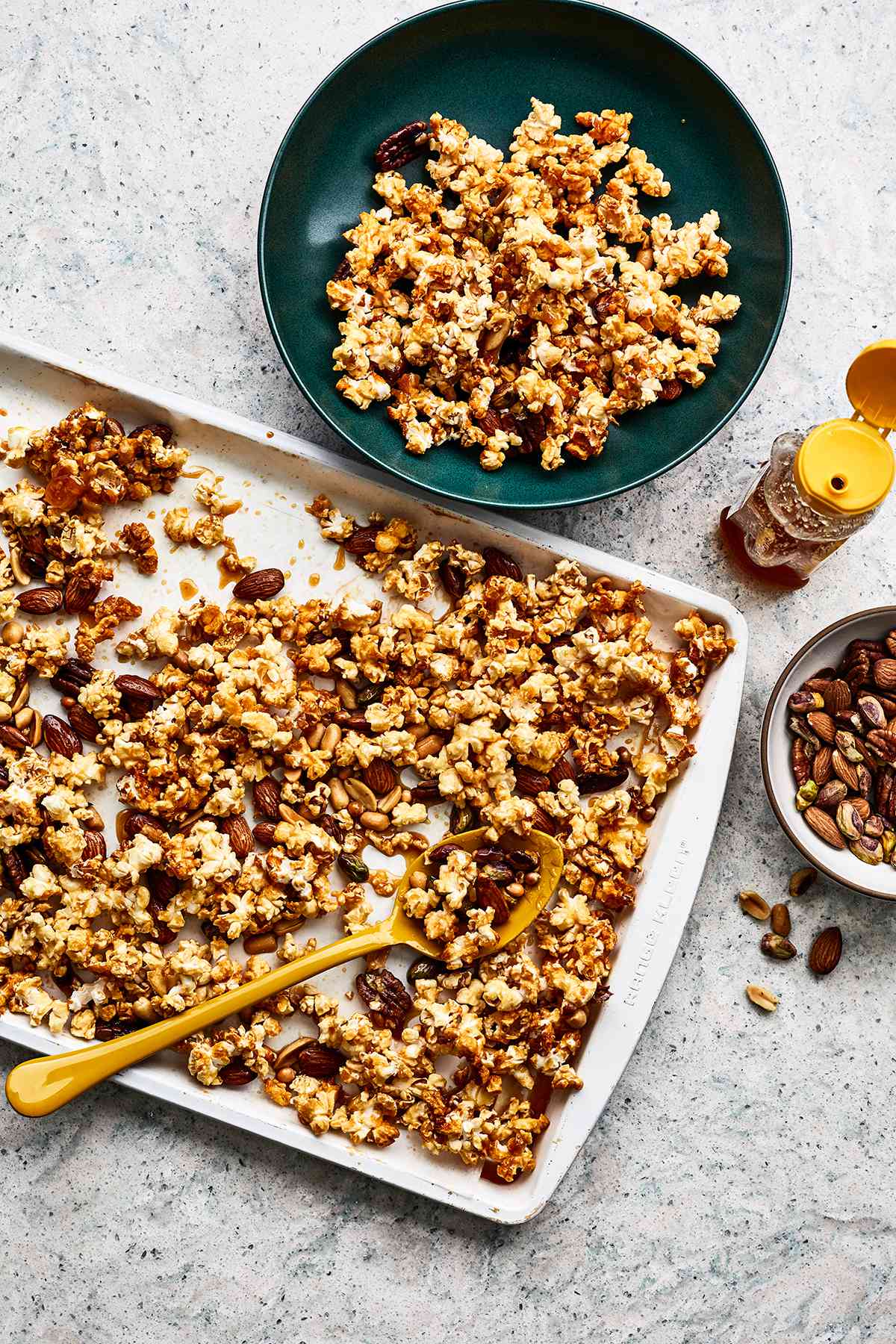Eating more fiber is one of the most common health recommendations for Americans. Fiber provides a remarkable number of health benefits—and Americans generally aren’t getting enough of it in their everyday diets. And some of the best times to sneak more fiber into your life is at snacktime.
Classic snack foods like chips, pretzels, sodas, and baked goods are generally low in fiber, but it’s actually quite easy to bump up the fiber content of your snacks throughout the day to help meet your daily fiber goals (and feel more full, satisfied, focused, and energized!). In fact, most high-fiber foods—like fruits, veggies, nuts, seeds, whole grains—make for perfect snack components.
Let’s explore what fiber is, where you can find it, why it’s important, and how to turn your typical snacks into healthy, high-fiber snacks that keep you satiated until dinner time.
What Is Fiber?
First things first, what is fiber? Fiber is a type of carbohydrate, which is one of three most important macronutrients we need, alongside fat and protein. “But unlike fats, proteins, or other carbohydrates (namely, sugar and starches), which your body breaks down and absorbs, fiber goes through your digestive system without being digested or absorbed,” explains Samina Kalloo, RDN, CDN, New York-based registered dietitian and nutrition consultant.
Health Benefits of Fiber
Dietary fiber can be broken down into two main categories: soluble fiber and insoluble fiber, each of which play very important roles in supporting overall health.
“Soluble fiber dissolves in water (in your digestive tract) and helps to manage blood sugar and cholesterol,” Kalloo says. Soluble fiber slows digestion to dull the blood sugar response, resulting in less intense spikes and dips after eating. The effect of slowing down the process of digestion helps leave you feeling fuller longer. Soluble fiber also binds to dietary cholesterol in the small intestine to rid this type of fat from the body instead of entering into the blood. Excessive amounts of circulating cholesterol in the body can lead to atherosclerosis or clogged arteries that can potentially contribute to heart disease.
“Insoluble fiber, on the other hand, doesn’t dissolve in water and adds bulk to stool, making it easier to pass,” she continues. This is why insoluble fiber is often recommended for constipation, while gel-forming soluble fiber is a common remedy for diarrhea.
Beyond the important heart, metabolic, and digestive benefits of fiber, fiber-rich foods also help to boost the health of our gut microbiome. This is thanks to soluble fiber’s prebiotic power. Prebiotics act as food for the healthy bacteria in your microbiome, helping this vital community of microorganisms in the large intestine to thrive. Research continues to suggest that there are few body systems that a flourishing microbiome doesn’t positively influence—but it is especially beneficial for brain, immune, and gastrointestinal health.
How Much Fiber Do You Need?
Generally speaking, Americans are missing the mark when it comes to adequate fiber intake. “National surveys show that only about 5% of adults reach the recommended fiber intake,” Kalloo explains. “This low fiber consumption is seen as a public health concern.”
Fiber needs vary from person to person based on a variety of factors, but “the Dietary Guidelines for Americans, 2020–2025, suggest that adults should aim for around 28 grams of fiber daily,” Kalloo says.
Foods High In Fiber
One easy way to remember which foods contain fiber is that they’ll almost always be plant-based. “Great sources include whole grains (i.e., brown rice, quinoa, and oats), vegetables, fruits, nuts and seeds, and legumes (beans, peas, lentils),” Kalloo says. Fiber is particularly concentrated in the skin and seeds of these options—so eat those when appropriate (though not all skins and seeds are edible, like avocado for example).
Most sources of fiber will also contain both soluble and insoluble fiber, so you can rest assured you’re reaping the benefits of both kinds with every fiber-rich food you enjoy.
High-Fiber Snack Ideas
1. Crudites and Babaganoush

The crunch of fresh veggies combined with their fiber content offers peak satisfaction for a midday pick-me-up. Great veggies for snack time include baby or cut large carrots, celery, cucumbers, cherry tomatoes, snap peas, peppers, and radishes or raw broccoli. Any tasty dip will do since you’ll already be crunching on produce—yogurt, hummus, lentil, avocado, labneh, bean dip, or even a vibrant beet and goat cheese dip. But I highly suggest Baba Ganoush, which offers extra high-fiber thanks to its base of flavorful roasted eggplant. This Mediterranean classic is creamy, smoky, and seriously delicious.
2. Green Smoothie

Most smoothies are great sources of fiber, but green smoothies often trump the rest because of their leafy greens, like spinach or kale. I like to embrace other green produce in a green smoothie, too, like fiber-rich green apples, grapes, avocado, and even mint. Adding chia, flax, or hemp seeds and a spoonful of nut butter will take the fiber content of your smoothie to the next level.
3. Greek Yogurt With Berries, Chia Seeds, Granola, and Nut Butter
As delicious little packages of skins and seeds, berries of every variety are loaded with fiber. They also make for a perfect yogurt topper alongside fiber-packed chia seeds, oat-based granola, and nut butter. Meanwhile, full-fat Greek yogurt will deliver filling fat and protein. And as an added bonus, when dairy products are fermented (as is the case with yogurt) some of their saturated fat is converted to heart-healthy unsaturated fat.
4. Popcorn With Nuts, Seeds, and Dried Fruit

Popcorn is remarkably high in fiber with an impressive 1 gram per cup (most people eat many cups per sitting!). Instead of adding chocolate chips or pretzels to your popcorn, boost the fiber content naturally by mixing in nuts, seeds, and unsweetened dried fruit for a satisfying sweet-salty combination. Pro tip: Try air popping your popcorn to make it even healthier for you.
5. Whole-Grain Avocado Toast With Sliced Tomato
No brunch feels complete without a side of avocado toast, but this dish also makes an excellent midday snack. To get the most fiber out of your avo toast, opt for a whole grain seeded loaf and top it with sliced tomato (I love everything bagel seasoning for an extra punch of flavor).
6. Homemade Trail Mix
Trail mix is the perfect snack: easy to grab and go, super-tasty, and full of satiating fiber, protein, and healthy fats (the healthy snack trifecta!). Many store bought brands can be laden with added sugar, so I like to make my own at home by combining my favorite nuts, seeds, whole grain pretzels, and unsweetened dried fruit. Store in an airtight container and keep it in your pantry, desk at work, or in your everyday bag for a quick snack anytime hunger pangs come knocking.
7. Apples and Celery With Nut Butter
Apples and peanut butter are a match made in snacking heaven—as are celery and peanut butter. Peanut butter is a perfectly good option, you can mix things up by trying another nut butter variety, whether it’s cashew, almond, sunflower seed, or another butter that draws your eye. Top your celery and nut butter with unsweetened raisins for a nostalgic “ants on a log” moment (that just so happens to boost the snack’s fiber content, too!).
8. Edamame With Sea Salt
If you have access to a stovetop or microwave, prep some frozen soybeans, aka edamame so you can snack on them during the week at a moment’s notice. Just one cup of these buttery green soybeans contains over 8 grams of fiber! Heat them up gently in the microwave with a splash of water, then sprinkle with sea salt for a plant-protein- and fiber-fueled snack anytime.
9. Dates With Nut Butter
When you have no time to waste, but need a satisfying treat fast, grab two to three Medjool dates, add a swipe of natural nut butter to each, and pop them in your mouth for a high-fiber bite that tastes more like candy than a nutritious snack.
- Advertisement -

